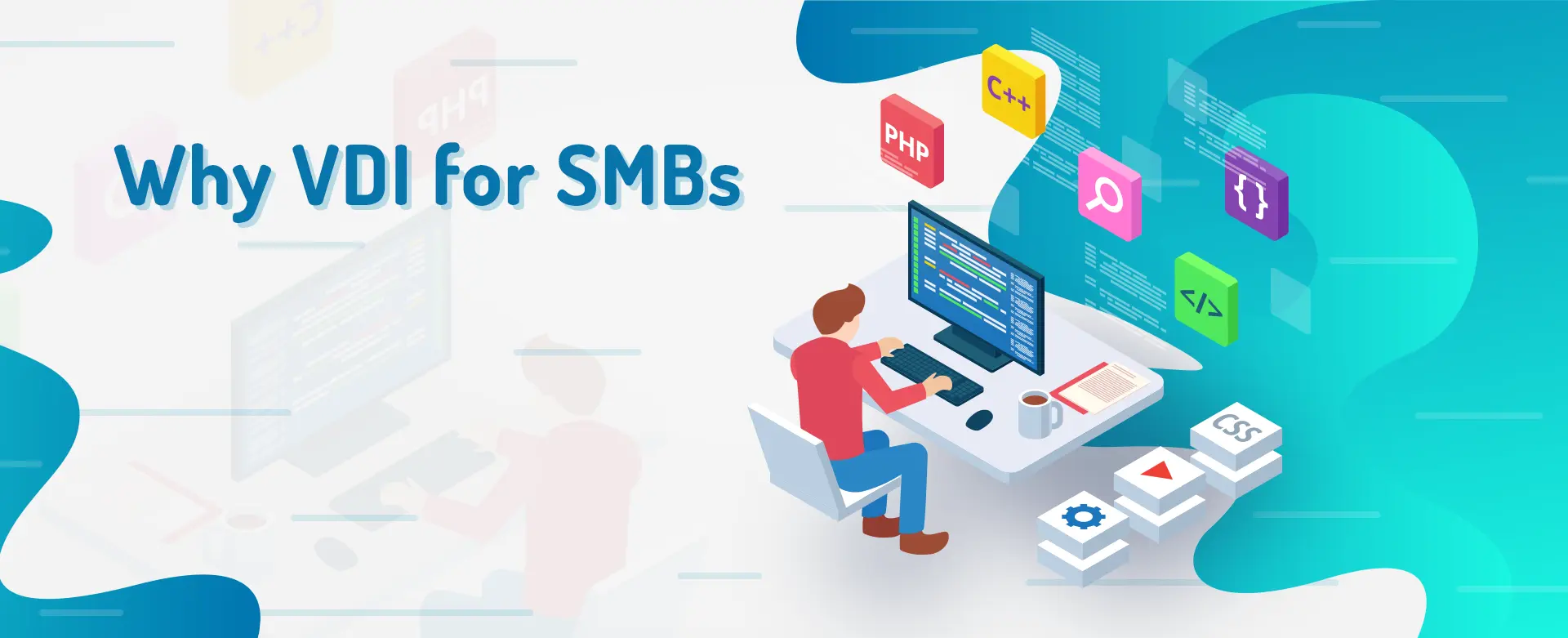This is a common question in the IT world. Simply put, virtual desktop infrastructure (VDI) is virtualization technology. It involves running user desktops inside VMs and hosting them in data centers where they can be centrally managed.
Today, businesses are showing a keen interest in virtualization because of the vast benefits it offers. More importantly, the promising scope of this platform gives them every reason to do so.
When discussing this subject, our first thoughts are often about the costs and difficulty of the implementation process. Rather, we must focus on why the technology is a smart IT strategy, and how it is affordable and important for SMBs.
Now, let’s examine the possibilities and benefits of VDI for small business.
Gain a Competitive Advantage
The ability to respond to new and ever-changing demands in today’s workplace is a real game changer. In reality, a solid approach to business depends heavily on a good IT strategy. Companies can improve customer service through reliable IT systems that revamp business processes to better serve clients. However, failure to keep up-to-date puts them at the risk of falling behind the competition. Imagine the outcome of this for large businesses, let alone SMBs.
So, how can VDI help? Back then, purchasing and allocating virtualization hardware and software to meet business needs was a challenge for SMBs. Today, there are many vendors who assist SMBs in easily adding new desktops and users at low prices. They also help in increasing resources like storage and memory to match the needs of these users. Moreover, with the right vendor, you do not need to:
- Do the heavy lifting on setup, configuration, and maintenance.
- Buy costly Thin Client or Zero Client devices to support your project plan.
- Under or over-provide network bandwidth to support user needs.
All these go a long way in simplifying IT systems for improved performance. This lets SMBs give larger companies a run for their money.
Boost Flexibility and Agility
Let’s look at another reason why VDI for SMB makes sense. Anything that gives businesses greater control over their IT systems is a winner. Luckily, this technology does just that. Virtualization reduces the time it takes to deliver desktops and this eases ongoing support for desktop management.
Here are some examples. IT does not need to deal with separate devices when patching applications, backing up files and pushing updates or upgrades. Moreover, troubleshooting is a piece of cake in such a setup where IT can access PCs through a linked workstation. Think of how difficult and time-consuming things could be otherwise.
IT further saves time in finding data, files and applications. The reason? Every user is presented with the same desktop environment. This is always the case, no matter what computers they use to access their profiles.
Moving on, the technology increases business agility. Users can access their desktops and applications anytime, anywhere, and from almost all devices. This also promotes BYOD plans because having users bring their own devices to work improves morale and productivity. For example, they can connect to their virtual desktops from a smartphone or tablet.
These features also bring more business prospects for SMBs. With cloud based access, users can even work remotely, at home or abroad. This can also be useful for handling tough situations. For example, sickness, natural disasters or hostile weather that prevent users from coming in to work.
In case of tech failure, SMBs do not need to wait for their machines to be repaired or replaced. They only have to install the VDI app on a backup machine so that users can get back to work instantly. There you have it. Decrease downtime through virtualization without breaking the bank and promote business continuity with no loss of momentum.
All these give SMBs more time to focus on other business strategies that can put them on par with larger companies.
High Security
Virtual desktops provide many different layers of security when it comes to protecting sensitive information. To begin with, users cannot access data through USBs or PCs in such a deployment. This is because valuable data is encrypted and stored in secure 24/7 data centers.
Tip: work with vendors who blend frequent backups into their products and solutions.
Now, security is a big concern for SMBs due to obvious reasons such as lack of resources or in-house expertise. With virtualization, data resides in a centralized location so it becomes easier to identify likely threats. Also, vendors offer a high level of privacy through solutions with quality security protocols, access management and encryption. All these are benefits which SMBs may not be able to achieve on their own.
So, do research on secure and low-cost solutions in desktop virtualization for small business. For instance, Thin Clients are secure, easy to set up and run. If you don’t know where to look for these clients, feel free to contact ClearCube. What’s more, you can even visit this link to get your Free Trial on them.
An example is our C3Pi Raspberry Pi 4 device. This is best for SMBs where task workers often run basic programs and applications. You get a small device which provides top-notch multimedia and graphics in VMware Horizon and other standard VDI setups.
Closing Thoughts
Virtual desktops being suitable for only large companies is wrong. You can easily go for a simple and modest project plan to support your SMB. Work with a vendor who understands what you need and suggests the right software and hardware on those grounds. All in all, the key is to define the 5Ws and 1H aspects of moving to this platform.

